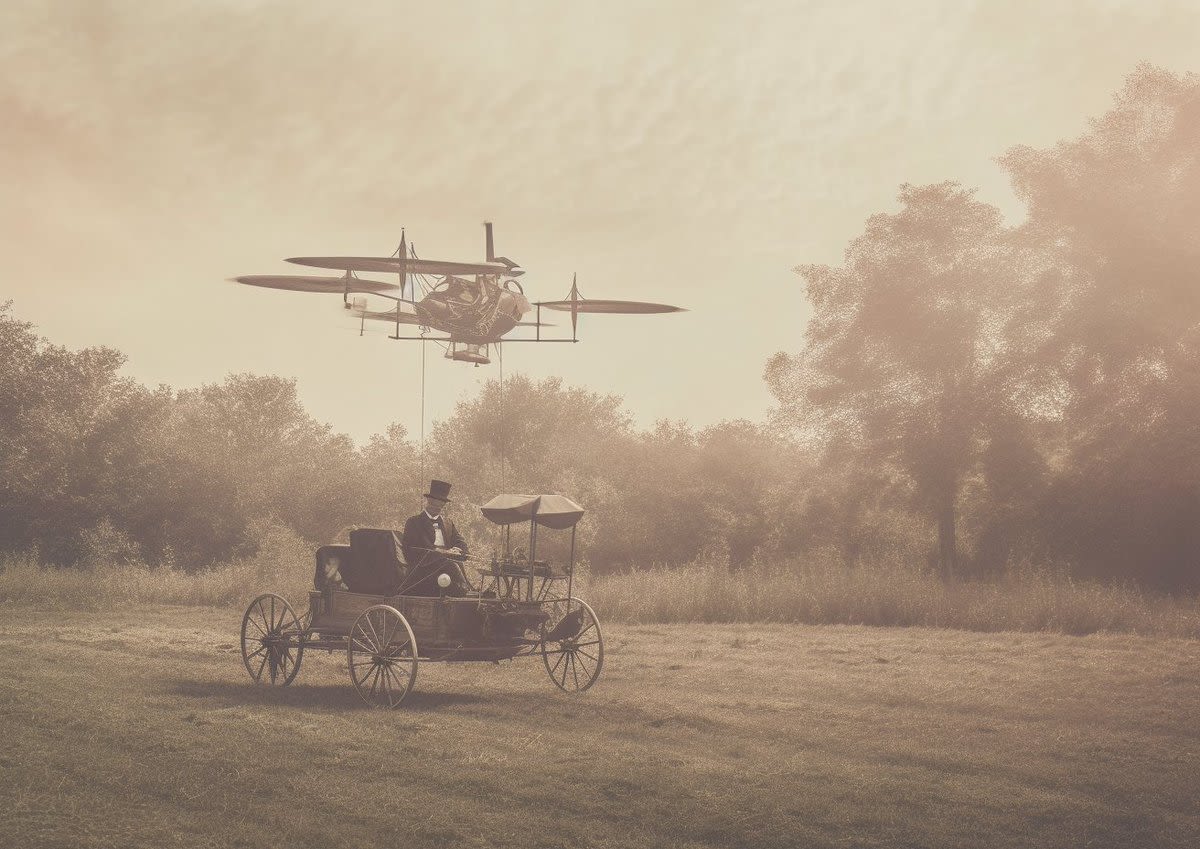AI Art: Nostalgia and the Uncanny
Exploring the creativity of AI artists.

Amidst generated images of satanic scenes in Hobby Lobby and plumes of smoke emanating from an exploded Pentagon, there is a far more curious and quiet corner of AI that is interested in using Midjourney, Dalle 2 or whatever the latest tool for AI-generated art is, to create the simple goal of a nostalgic, or uncanny vignette.
I first stumbled across this trend, mindlessly scrolling through TikTok, when I was met with the slow melancholic plod of Nicholas Britell’s ‘Agape’, accompanied by some truly arresting, AI-generated images of north east London in the early 2000s. Crucially, these were arresting images, they managed to stop my frantically scrolling thumb in the TikTok algorithm which capitalises scrolling which will cost you hours of your life to very little avail.
The artist in question is Jamie Smith, 26, who grew up in Islington at the turn of the millennium and is currently studying at the Royal College of Arts in the Netherlands.
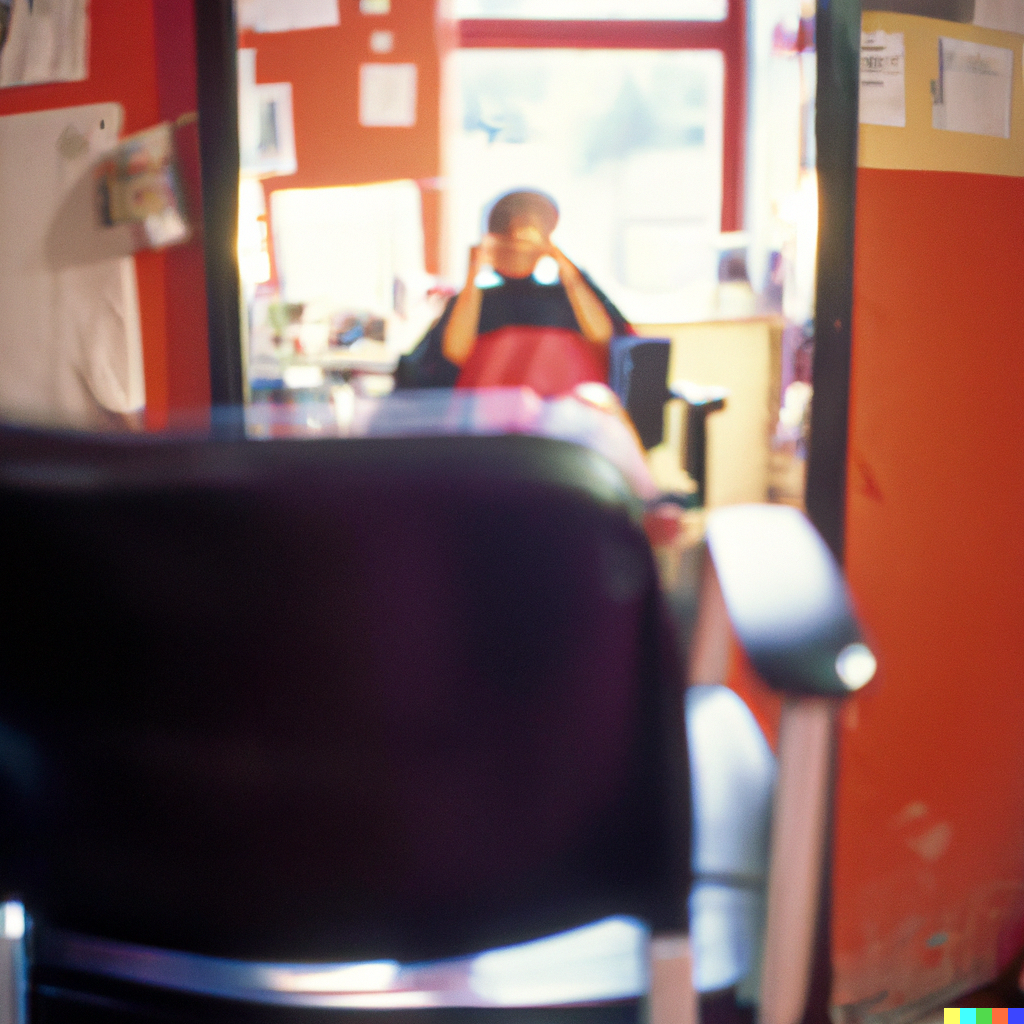
Jamie’s video captioned, ‘Told AI to generate images of early 2000s north London childhood’ has now amassed more than 200,000 views, 25,000 likes and even a generous comment from our old friend Transport for London that reads: “Sweet moments”.
Jamie decided to play around with the AI platform Dalle-2, the latest iteration of the programme, after his coursemate had her own AI art published on Vice. She used Dalle-2 to create a concept fashion shoot, which Jamie adds is a really great way for younger artists, who aren’t fully employed in the industry to test out their ideas quickly and cheaply.
He fed the AI some prompts, painting particular and specific memories he had of his childhood in north east London, and what he created, (or AI created, or he and AI created in partnership) was astounding.
Jamie said: “They were absolutely dead on - it was uncanny."
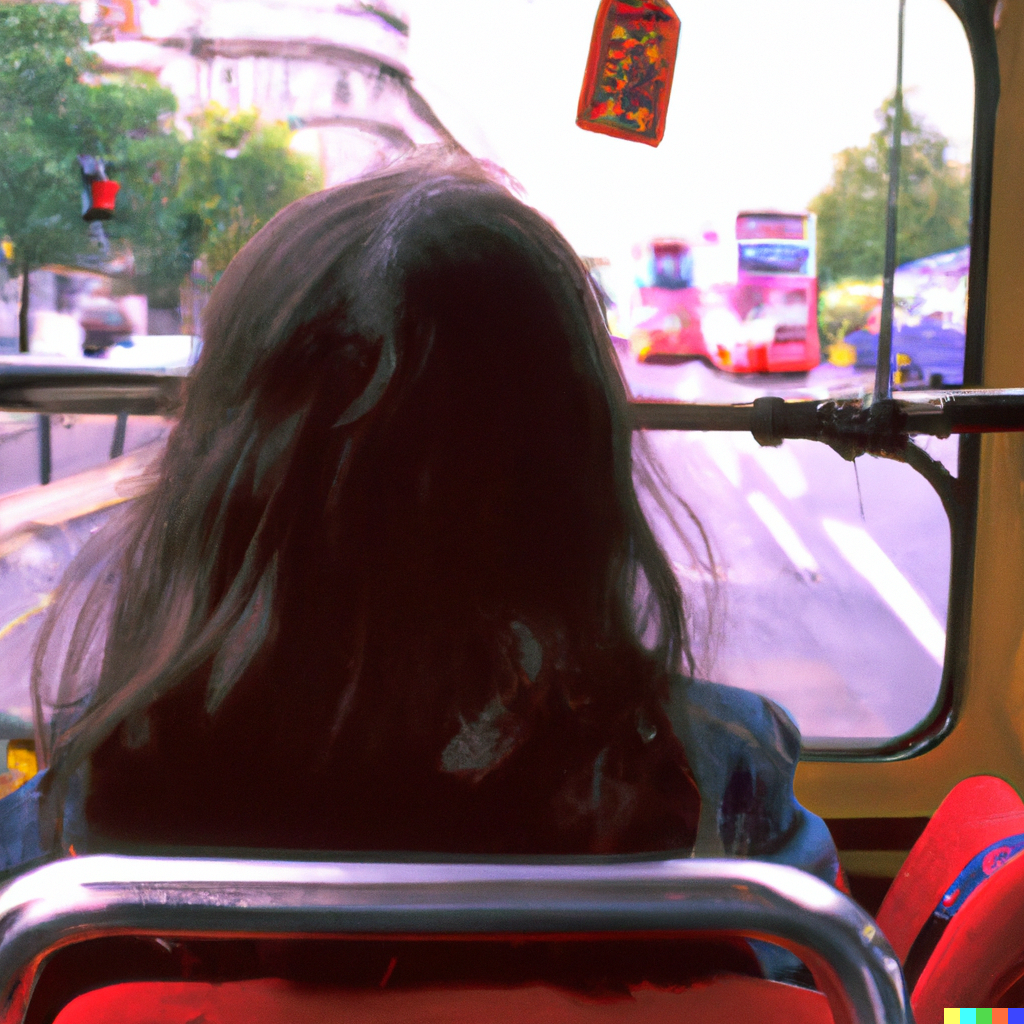
Jamie Smith / DALL.E 2 "Sitting on the top deck of a busy Routemaster going through central London in the late 1990s from a child's perspective"
"Stiing on the top deck of a busy Routemaster going through central London in the late 1990's from a child's perspective"
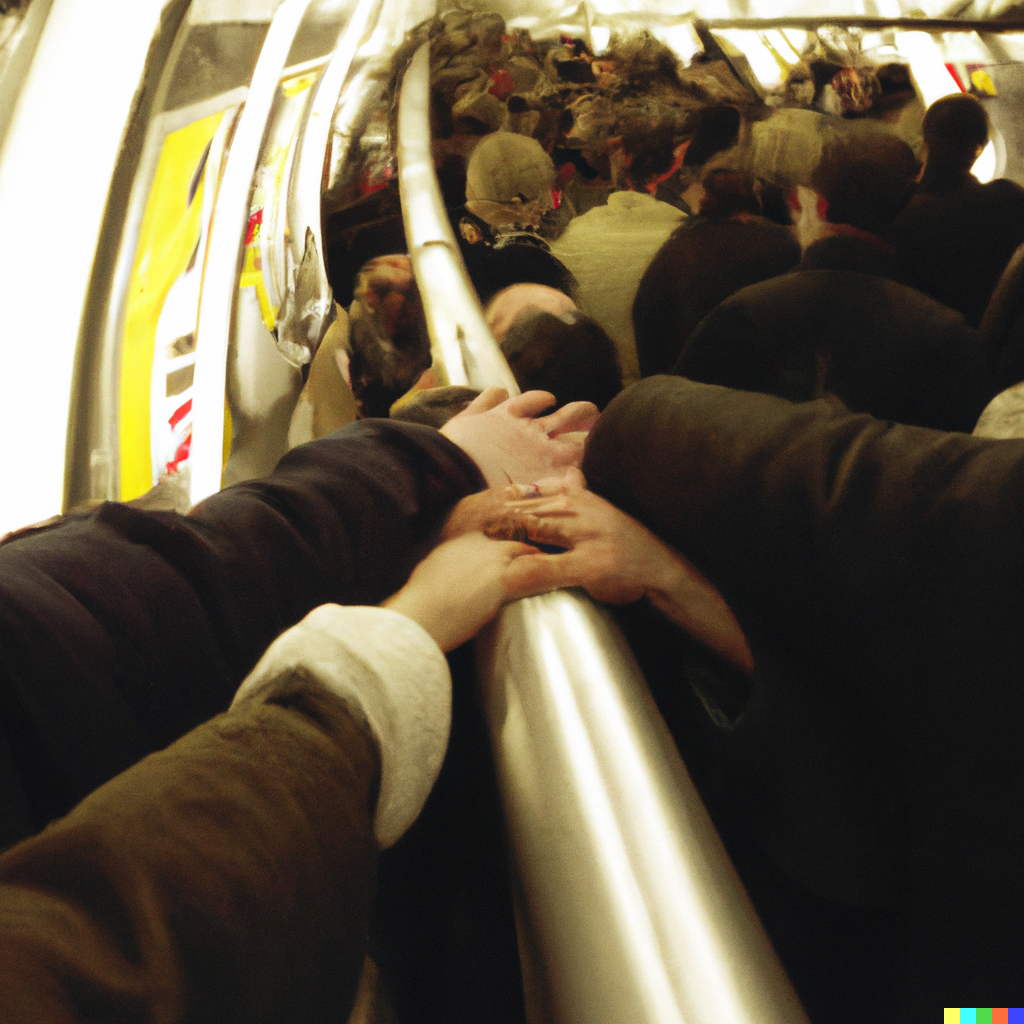
Jamie Smith / DALL.E 2 "Getting on a busy tube in rush hour in the late 90s holding your mother's hand"
"Getting on a busy tube in rush hour in the late 90s holding your mother's hand"
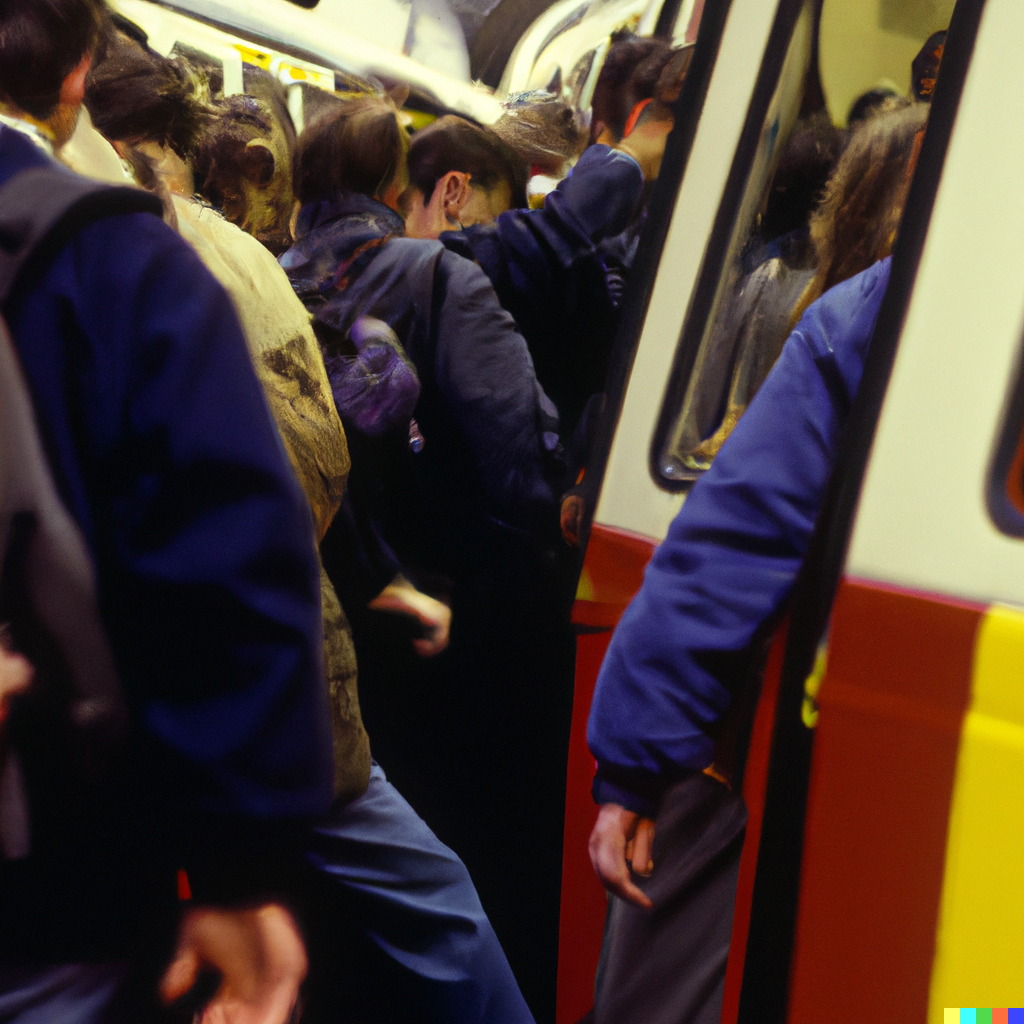
Jamie Smith / DALL.E 2 "Getting on a busy tube in rush hour during the late 90's"
"Getting on a busy tube in rush hour during the late 90's"
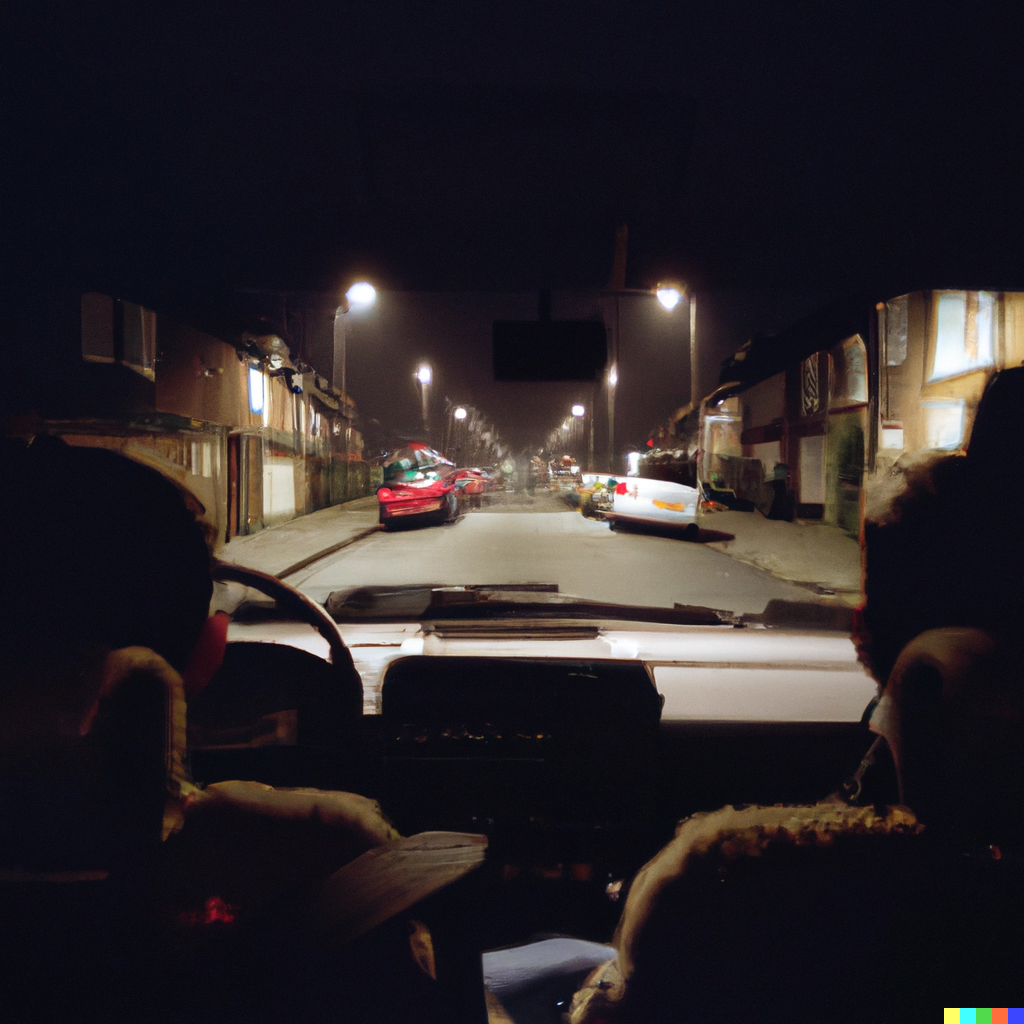
Jamie Smith / DALL.E 2 "Driving through London late at night in the back of the car listening to your parent's talk in the late 90's"
"Driving through London late at night in the back of the car listening to your parent's talk in the late 90's"
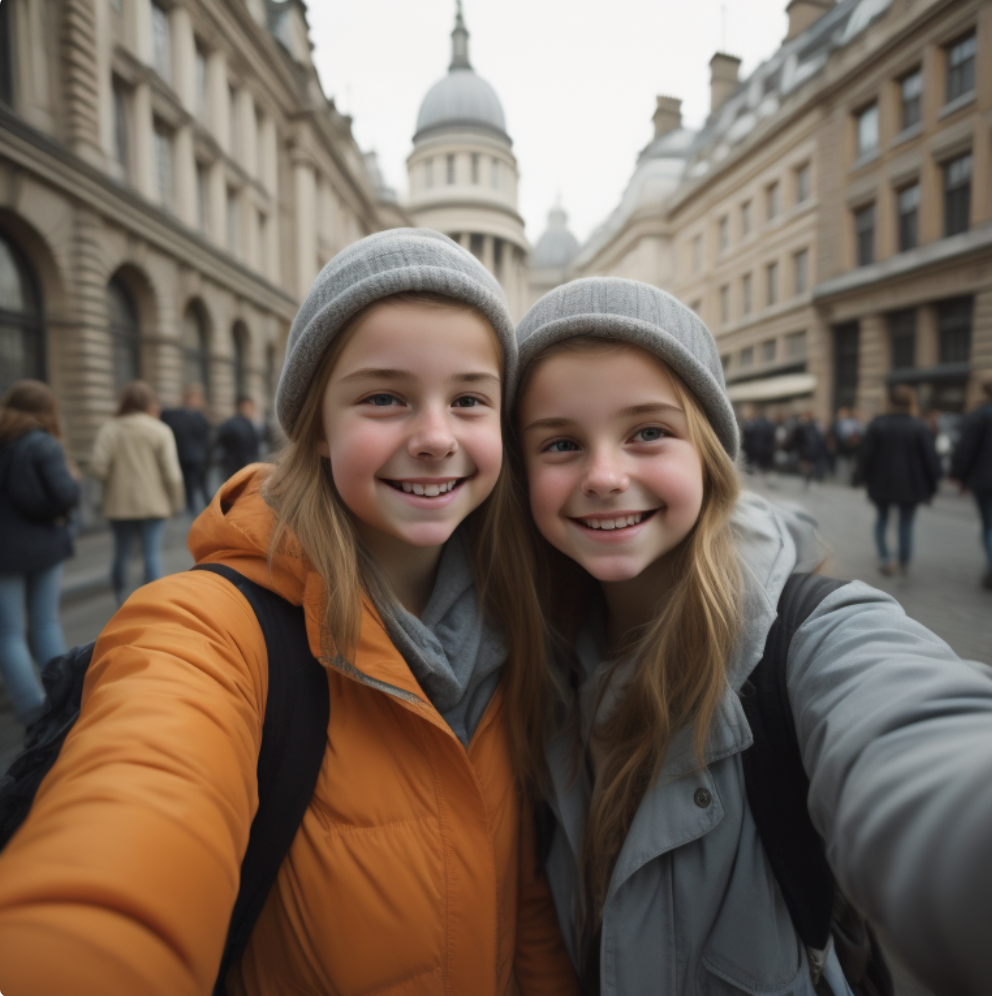
Emilia Randall/ Imagine Art - “Two teenage girls take a selfie in London in 2006."
Emilia Randall/ Imagine Art - “Two teenage girls take a selfie in London in 2006."
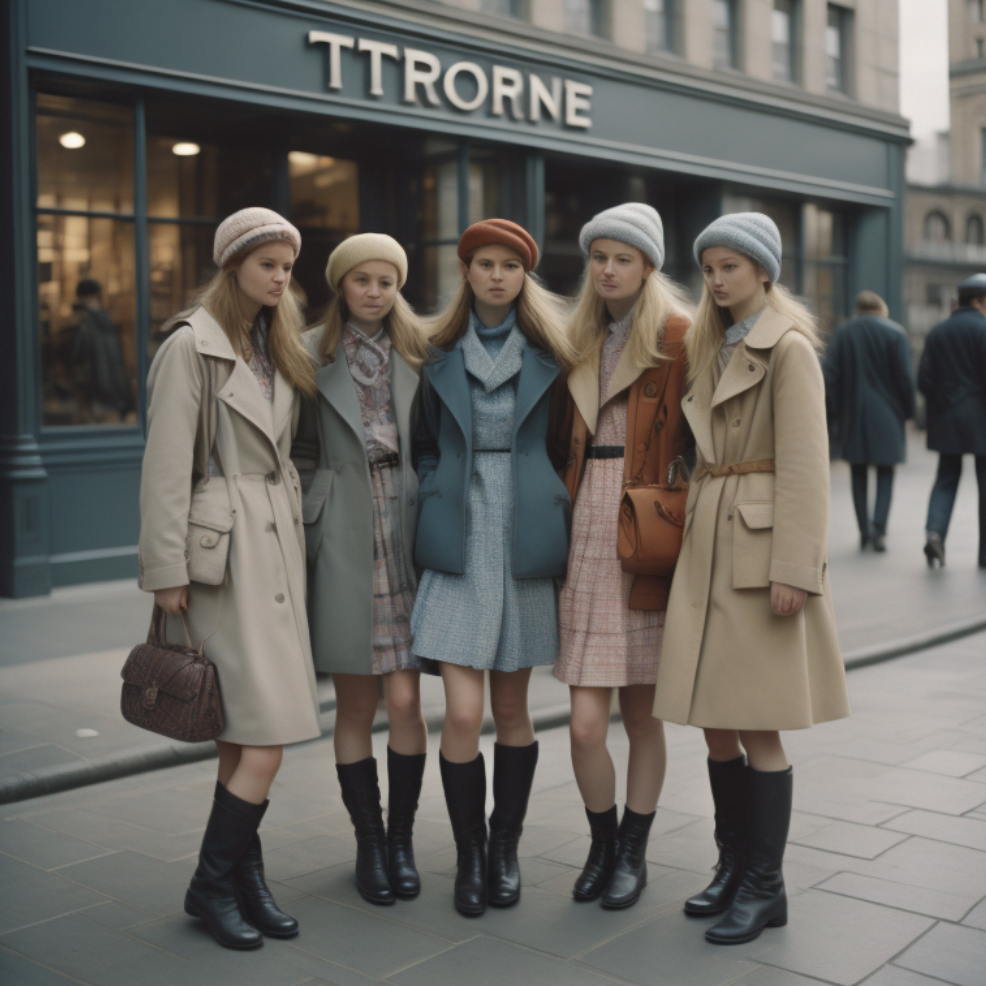
Emilia Randall/ Imagine Art - "A group of teenage girls outside Topshop in 2006."
Emilia Randall/ Imagine Art - "A group of teenage girls outside Topshop in 2006."
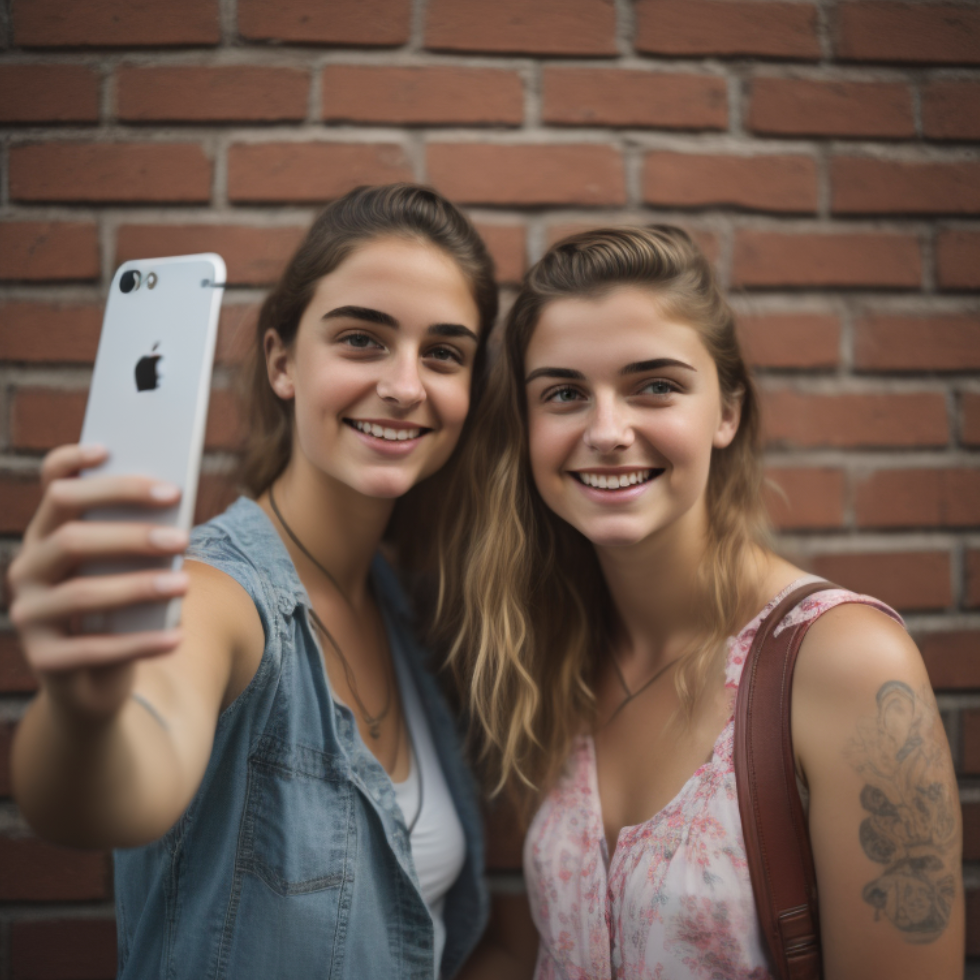
Emilia Randall/ Imagine Art - “two girls taking a selfie in a camera phone in north London in a hot summer."
Emilia Randall/ Imagine Art - “two girls taking a selfie in a camera phone in north London in a hot summer."
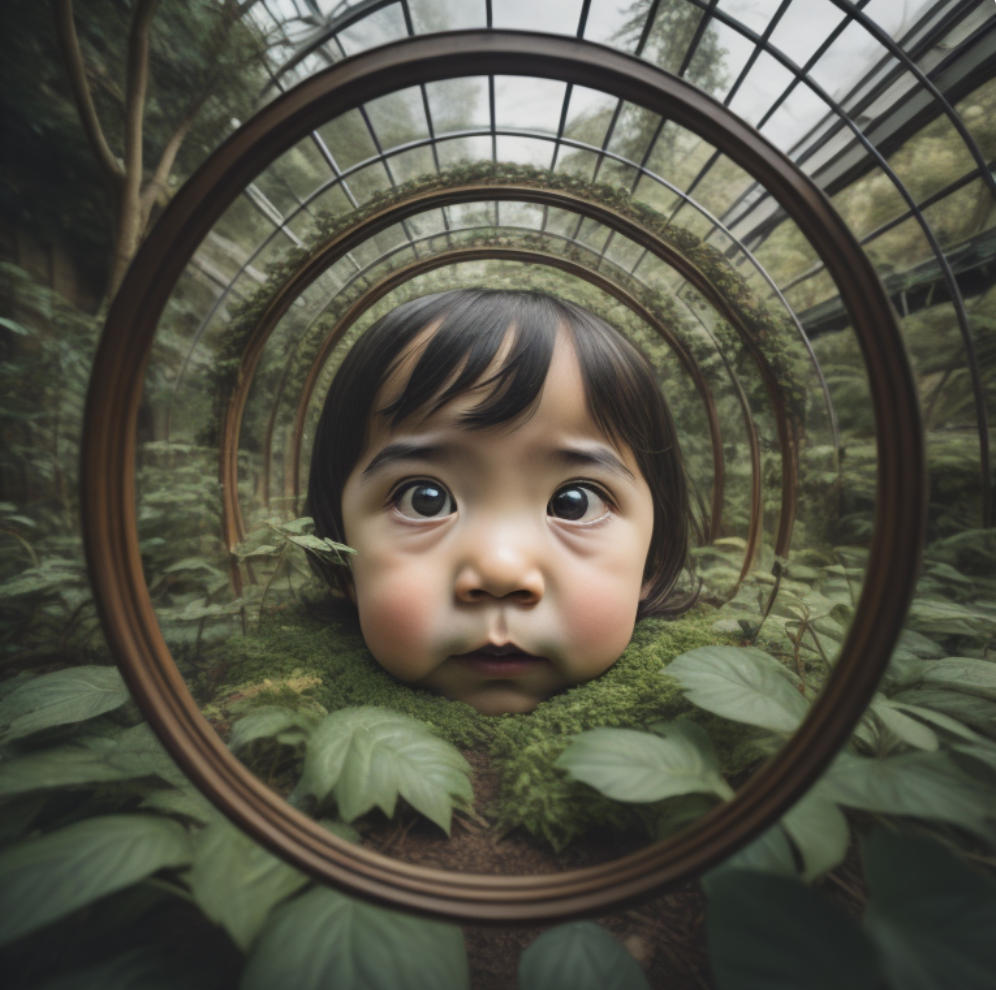
Emilia Randall/ Imagine Art - “Kew gardens through the eyes of a child in 2003”
Emilia Randall/ Imagine Art - “Kew gardens through the eyes of a child in 2003”
You may be asking, like one commenter, if there is any ‘skill’ to this artform, a harp back to the familiar parroting of “I could have done that” when looking at modern art. A few commenters voiced these thoughts, ‘Vaper’ stating: “These are just pictures you edited.”
I would ask you to look at my, it is fair to say, tragic attempts to cook up some of my own childhood memories through the free AI platform Imagine Art. If we were being kind we might say this is due to the less sophisticated platform, but my images range from eerie and unfriendly in their atmosphere to unsettling and absurdist.
I started with “Two teenage girls take a selfie in London in 2006." The girls looked far younger than I would have liked and their faces seemed over airbrushed. But most importantly, this image garnered no emotional reaction in me.
I tweaked this to "A group of teenage girls outside Topshop in 2006.” A gaggle of identical, beret-wearing girls group outside what looks like a futuristic clean street, the likes of which I have never seen in London. I was unimpressed again.
Dissatisfied with this vignette I moved on to “two girls taking a selfie in a camera phone in north London in a hot summer." One girl seems to have sprouted a sixth finger and there is a distinct lack of character to the photos.
I finished with my biggest regret: “Kew Gardens through the eyes of a child in 2003”. This terrifying and wildly inaccurate image was the opposite of what I expected and ended my experiment.
Returning to Jamie's art, he said: “The TikTok was a real walk down memory lane, and you can tell from the reaction in the comments section people thought the same.”
Roskana commented: “Grew up in Stoke Newington and it’s not far from the truth, making me hella emotional.”
Ashley commented: “Can’t explain it but this is what memories look like”.
Indeed, there is something moving about these images, Jamie says that the best ones are things that you simply cannot see or find anymore, such as kids' McDonald’s birthday parties, a 90’s school cafeteria, or being led down the turbine hall in the Tate.
The latter is a particular favourite of mine. The prompt Jamie used was: "Visiting the Tate Modern hall in the late 90's from a child's perspective holding your mother's hand".
Formulating that prompt is in itself creative and thoughtful, with exceptional attention to detail.
The detail of Jamie's prompt regarding the framing ("from a child's perspective") is what makes this image for me. This hyper-specific eye-line and visual is something, as an adult you simply cannot re-live. This also fulfils Jamie's hypothesis that the most moving images are those we cannot find experience, in the same way, today, in our adult lives. Jamie’s personal favourite is the image born from his prompt: “A busy child's birthday party at a north London McDonald's in the late 90's from a child’s perspective”.
We both agree this strikes the melancholic chord of nostalgia, for the same reason as the image of a child being led through the Tate: these cannot be experienced as our adult selves.
The busyness, and colour scheme of this particular scene submerges me in a vivid memory of a Year 2, post-bowling McDonald's party in 2002.
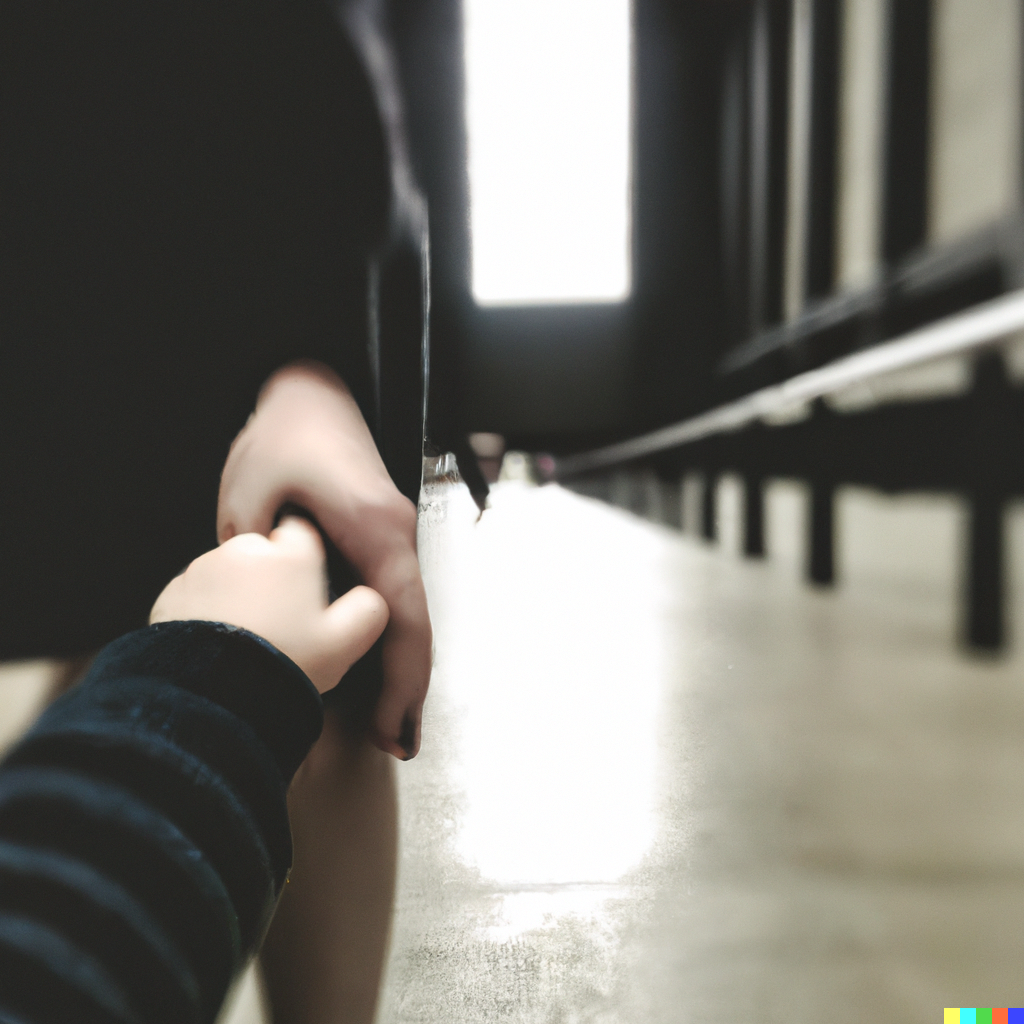
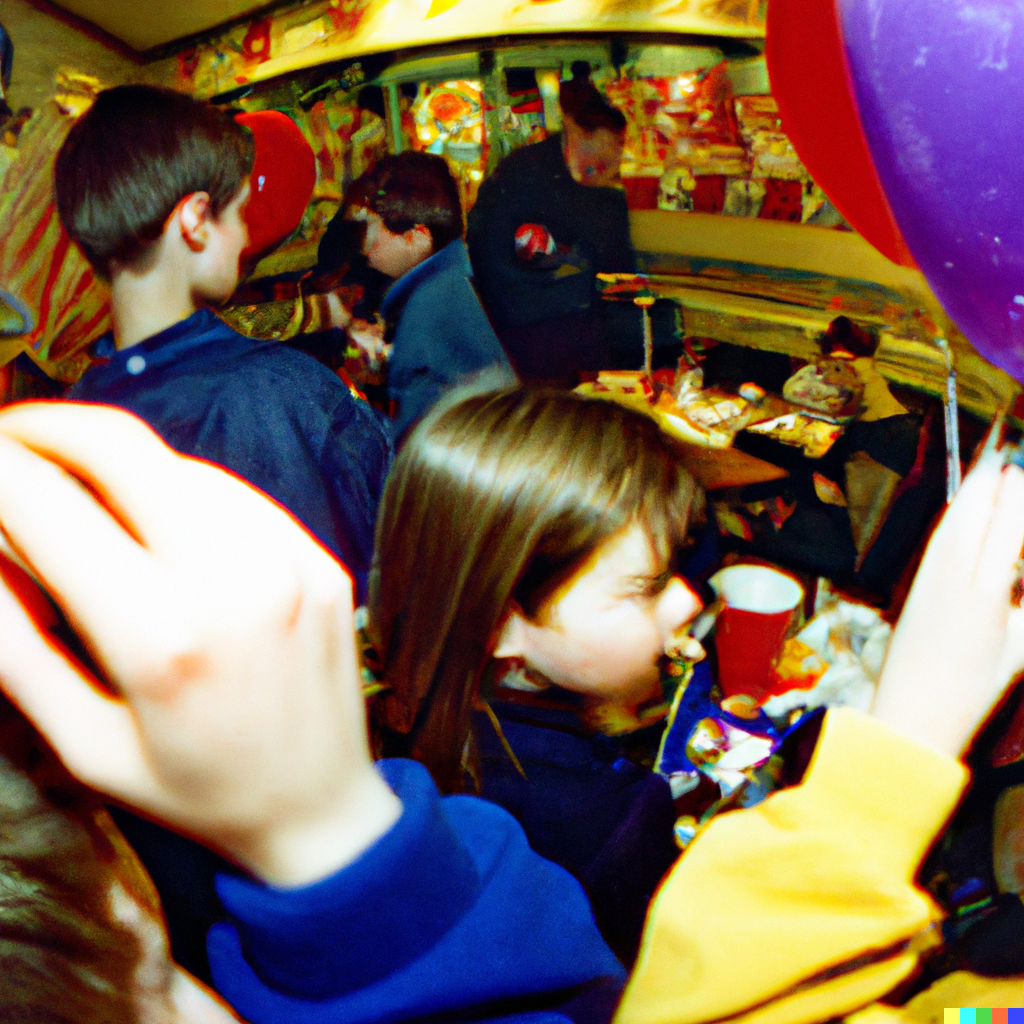
A recent Yale survey suggests that many people may not even know if the art they see has been AI-generated or not.
From 504 undergraduate Yale students, respondents could only tell if art was AI generated an average of only 54% of the time.
In a somewhat meta, attempt to explain how AI generates nostalgic, uncanny images, I asked AI itself to try to explain this to me. This infographic shows its answer:
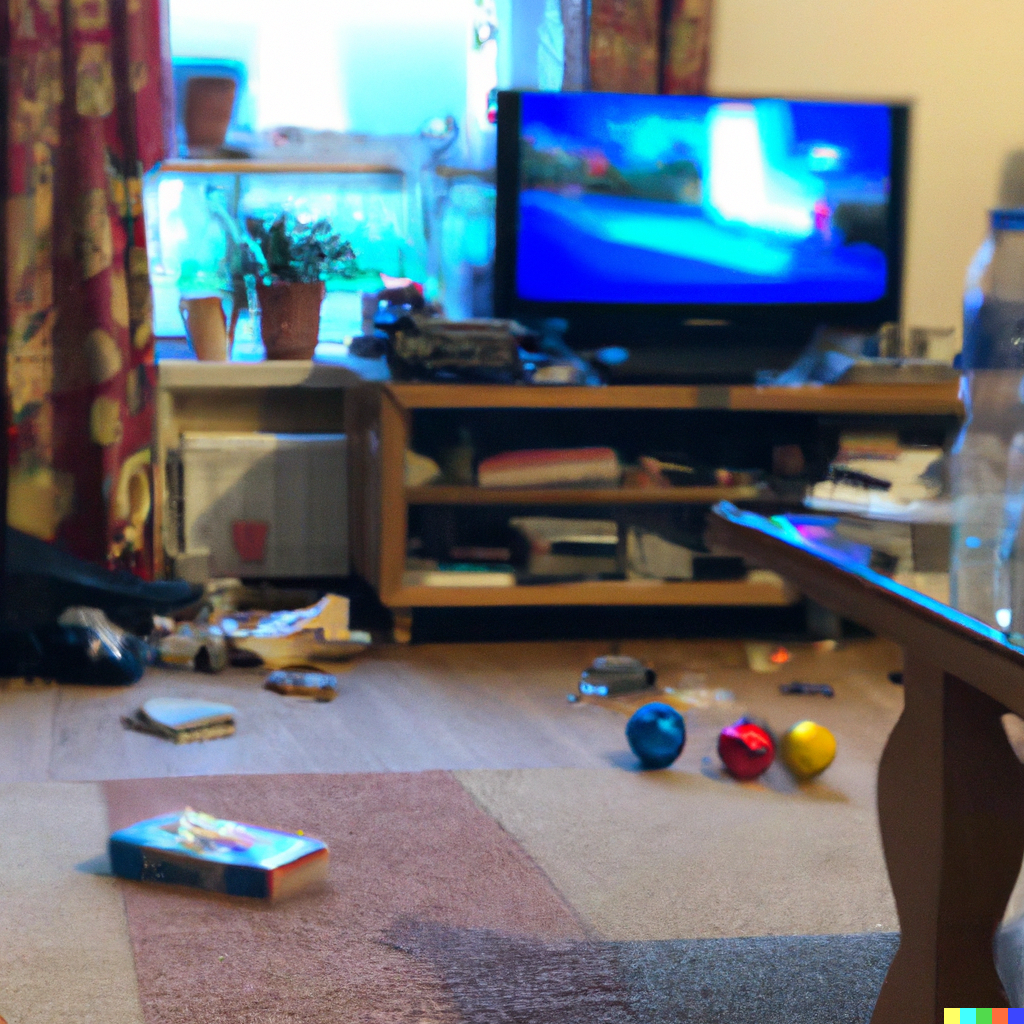
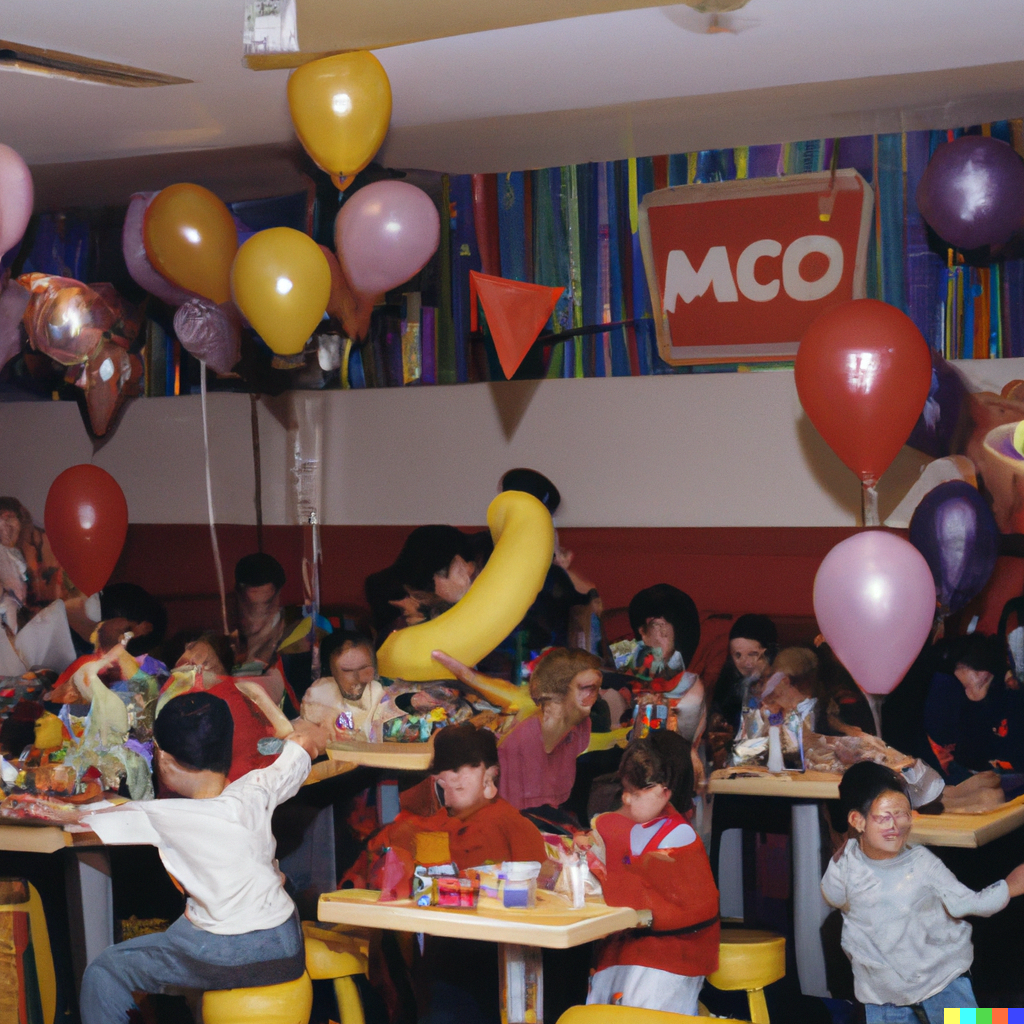
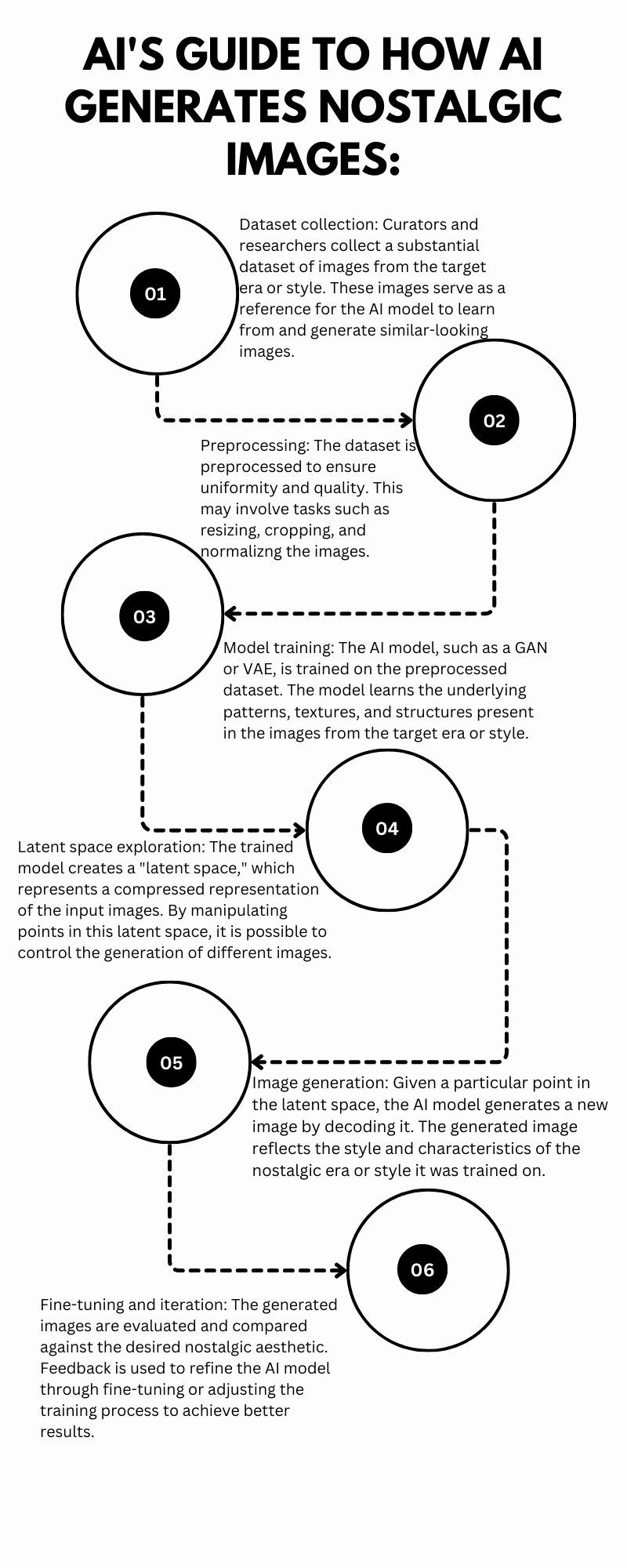
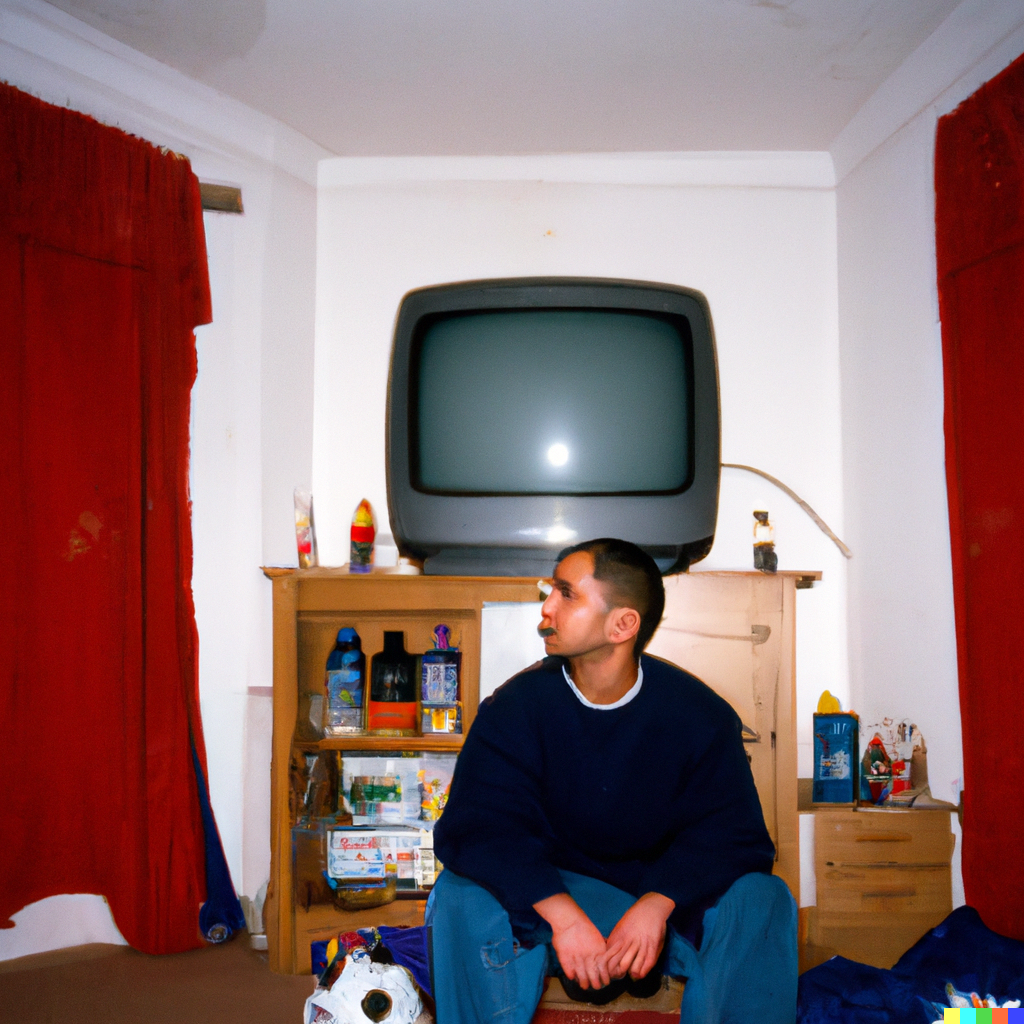
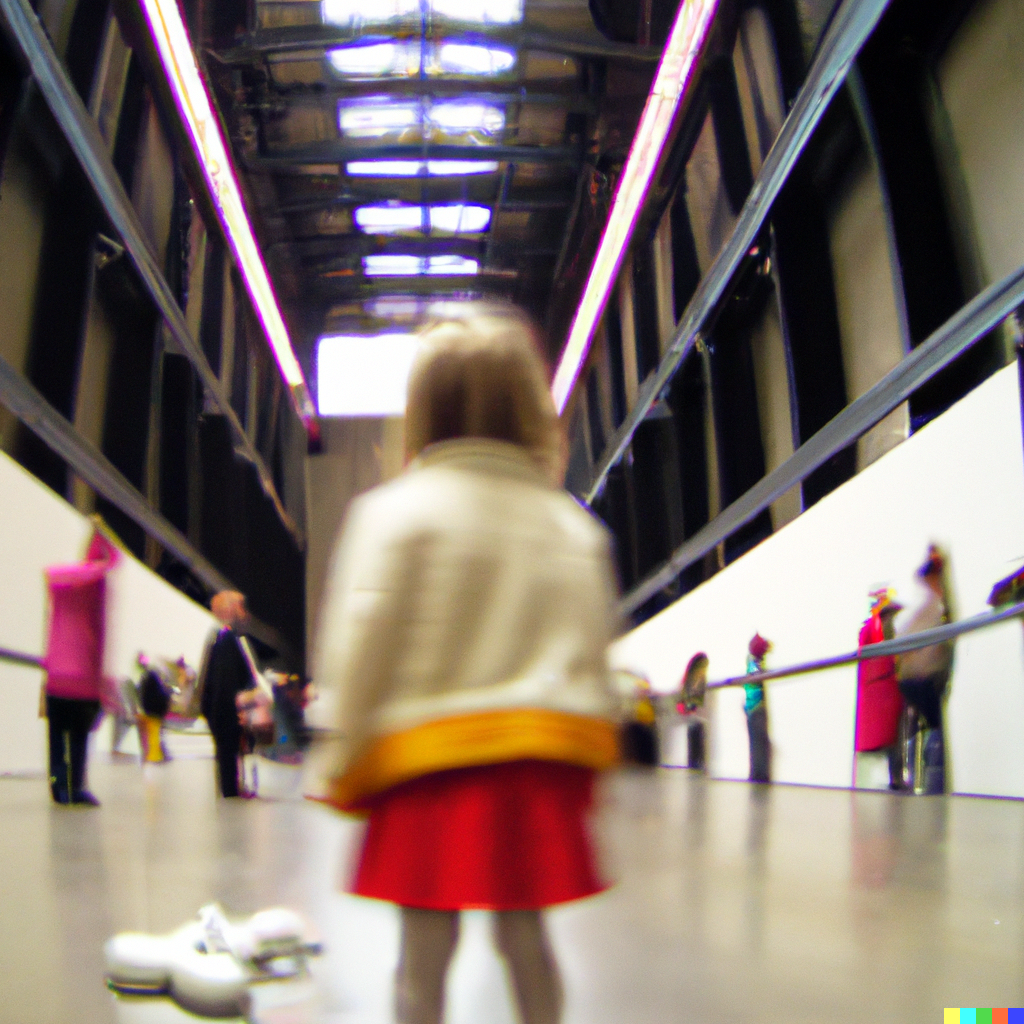
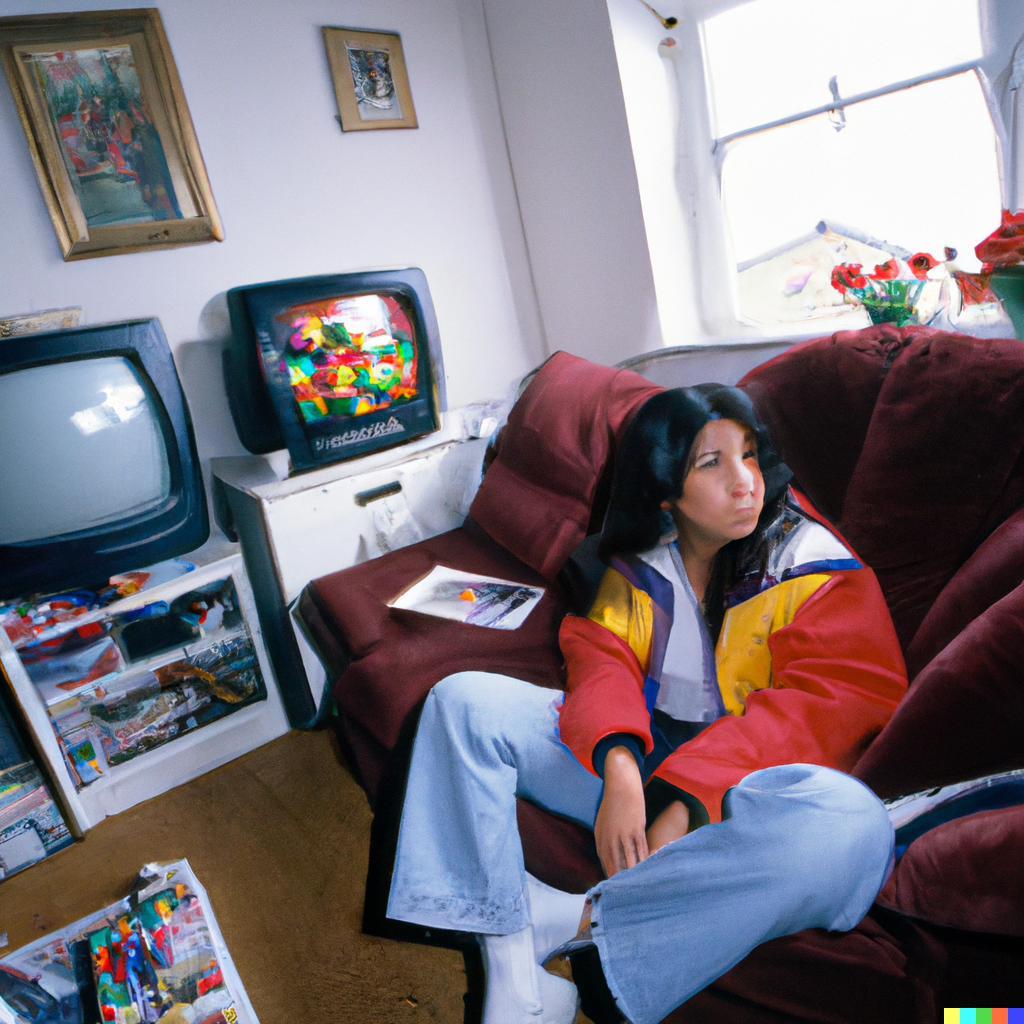
It may be fair to say that AI falls into the trope of being an expert in its field that struggles to simply explain said field to your average, human person.
Instead, I asked artist, Paul Weiner, based in Denver, Colorado to weigh in on his own artistic process.
Paul’s art ranges from images more identifiable as fake like JFK burning papers outside the White House, to more eerie and uncanny images that juxtapose nostalgic items such as flip phones with Victorian men, through a sepia-tone camera.
Paul uses Midjourney for his art, which also works by feeding the AI prompts. Paul agrees with Jamie in that it is the art of prompt writing itself which produces the most emotive images.
However, Paul emphasises the importance of these images looking real, for us to feel their impact. His images do have a more distinctly hyper-realistic style compared to Jamie's which are more stylised.
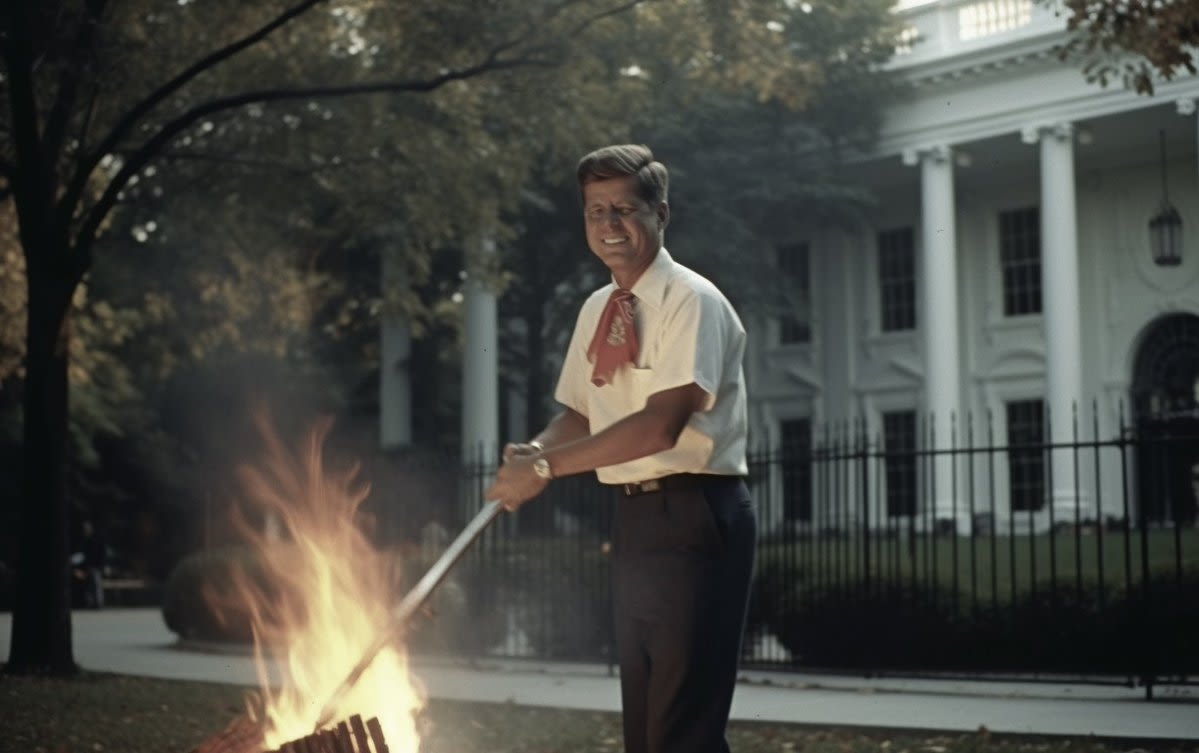
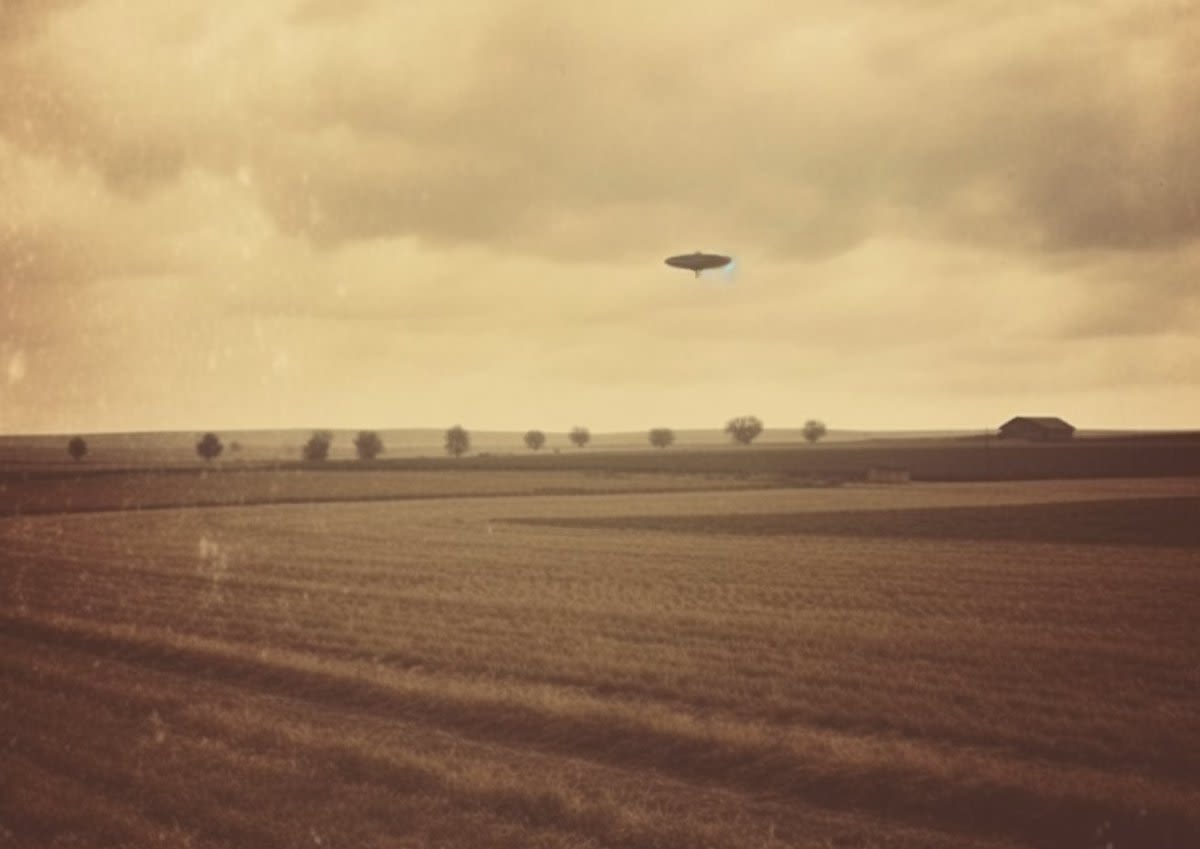
He says this image has an uncomfortable effect on the human brain, the contrasting items, a phone, a Victorian man and a sepia-tone camera, all items we know cannot exist in the same timeline, become as Paul says, “very uncanny valley”.
All the details are considered down to the china, woodwork, and even the slight, visual suggestion of dust covering the old man's belongings.
There are even hyper-authentic marks which make the image looks as though it has been developed in a real studio.
I asked Paul whether he also feels that a lot of these AI generated-images have a nostalgic, sometimes uncanny quality to them. He explained a little more about the specifics of why this might be.
Paul seems more process-led, running through multiple cameras that he asks Midjourney to emulate, trying to achieve the right lens, tone and feel to each image.
Paul said: "I'm mostly a painter and a conceptual artist, my studio is full of charcoal and paint, which I suppose is nostalgic in itself at this point."
He added: "I now have a more cyclical process, I play around with Midjourney and take these images to my studio and work from these."
He says the question of nostalgia is operating from a strange place, it's borne from the futuristic device which is AI but comes from a very human, emotional memory.
Paul said: "There's a level on which I think we believe nostalgic AI images more, especially events we weren't alive for."
We laugh about the recent, worryingly convincing image of the pope in a "papal puffer jacket". He adds that these technologies are developing at a rate that both fascinates and alarms him.
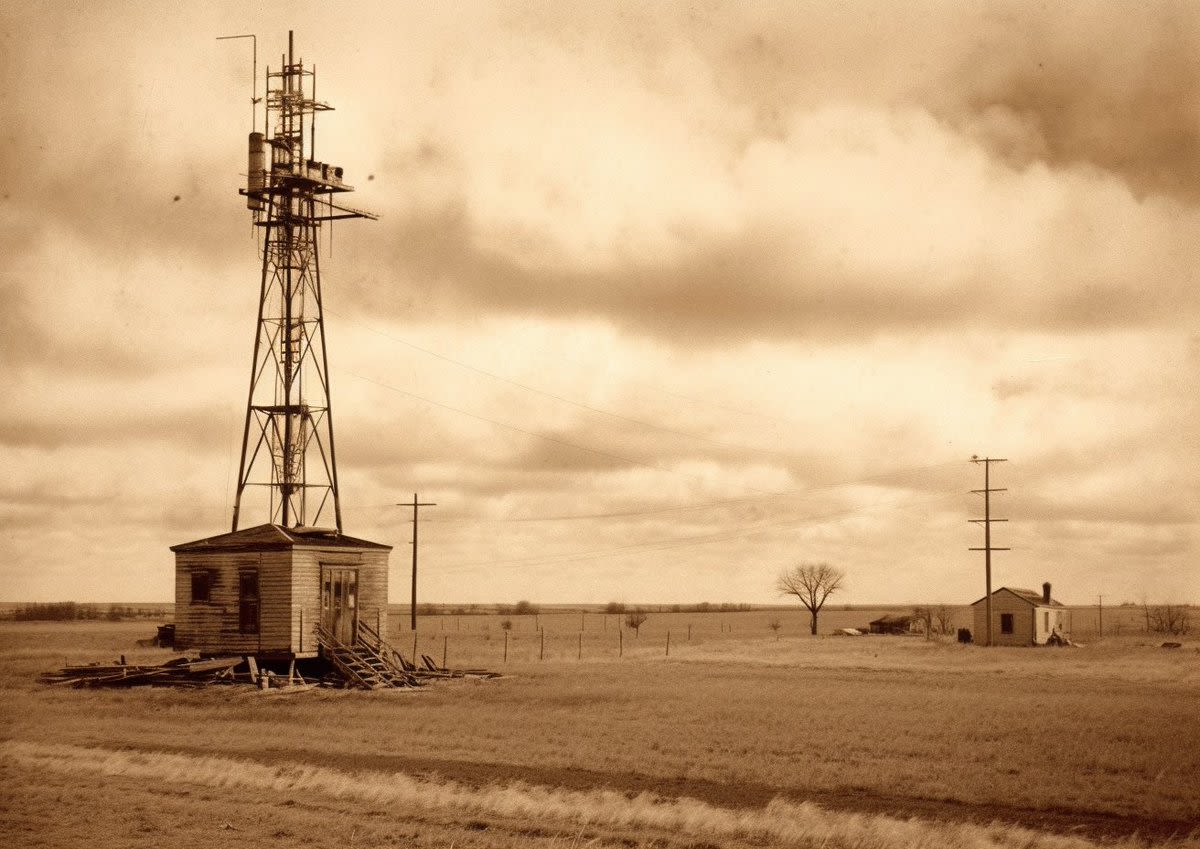
Differing from Paul, Jamie seems defiantly optimistic and excited about AI and art. We skim over any issues of deep fakes fertilising the increasingly toxic news cycle. Instead, we refreshingly focus on how AI will inevitably enhance our art.
He said: "It's going to change everything and everyone I know in the art world is pretty convinced it's going to change everything.
"This is just the beginning, in five year's time the landscape will be completely different."
I asked Jamie about questions of ownership, regarding the rising cases of people’s art being duplicated and stolen through AI.
He said: “That’s more of an internet problem.
“As long as the internet’s around people’s art is always going to be co-opted and mimicked.”
One commenter on Jamie’s TikTok said these images were useless, saying you could simply look at pictures you had taken yourself at the time.
In response to this Jamie told me that what he thinks is special about AI art is that it has no owner.
He said: "This art is owner-less. Real pictures, taken on a camera that you could look at would belong to someone, you or your friend or parents.
"The magic of AI art is a sort of collective memory, and an ability for people to project themselves into the image."
I think this is a convincing argument explaining why these images are so powerful.
It is even more significant that these images have had such a deeply melancholic reaction from viewers, as Jamie dreamt up the scenarios and created them thousands of miles away in the Netherlands, far away from the scenes of his north London childhood.
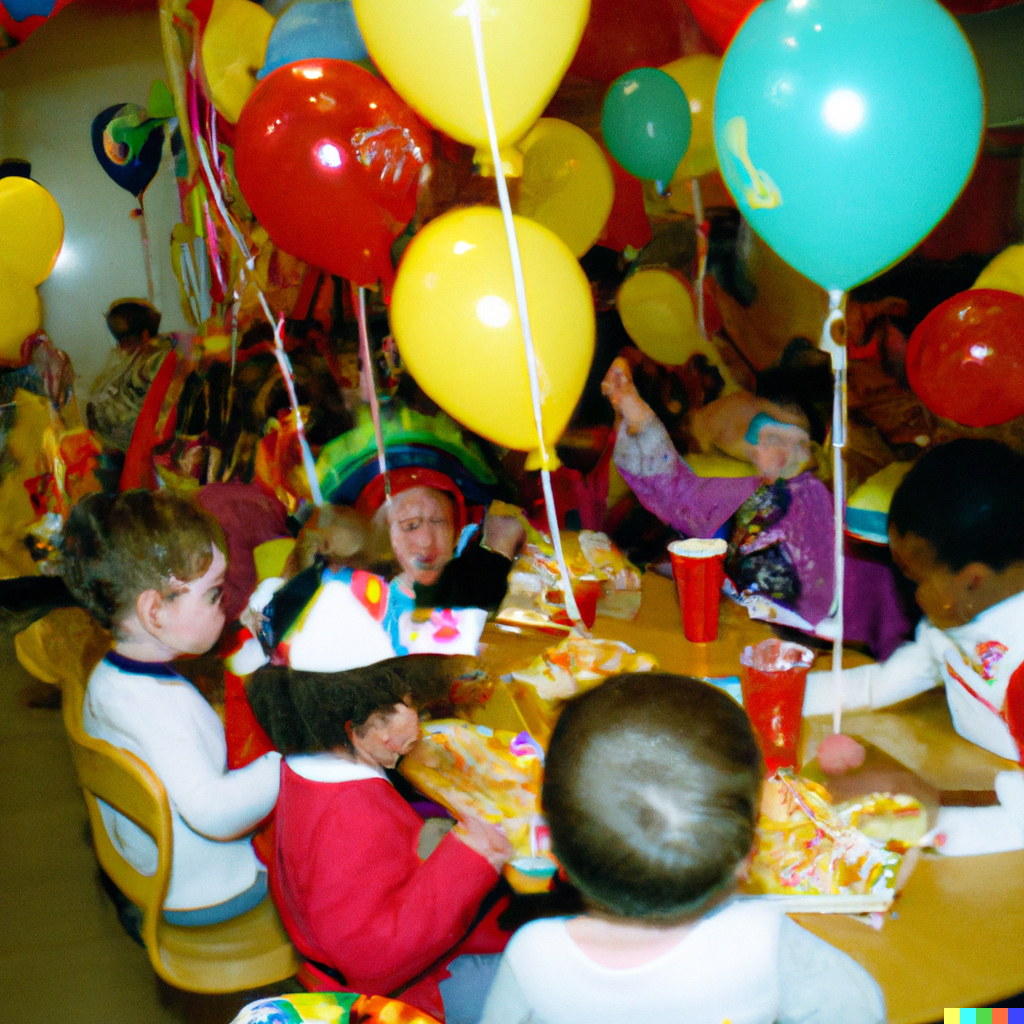

It seems the space these images thrive is in as Paul says "the moments we weren't alive for" or as Jamie says "places and moments that simply don't exist anymore".
It does seem, from Jamie's hundreds of thousands of views that these images do have a place.
Whether it's the added detailed perspective of "holding your mother's hand" given to DALL.E 2 or scrupulous research into camera lenses for Midjourney, it is the deeply considered, imaginative art of prompting which affords these images the right to be appreciated for all their uncanniness and nostalgia.
See more of Paul Weiner's work here
See more of Jamie Smith's work here
